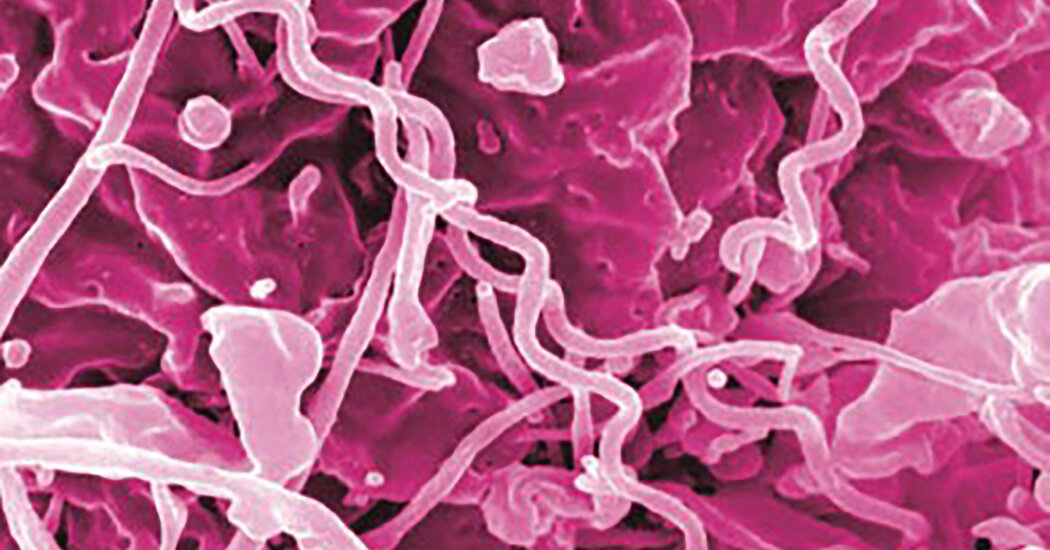NYC Life Expectancy Dropped 4.6 Years in 2020 Due to Covid, Officials Say
A wave of illness hit New York City, with little warning. Soon, it was sending the death rate rocketing upward.
It was 1834. New York City was just expanding its first railroad line. The penny press was flourishing. Cholera had struck. And smallpox was resurgent.
It would be nearly 200 years before another shock that seismic, when the coronavirus pandemic in 2020 caused the death rate in New York City to once again climb about 50 percent over the previous year, according to new data released Friday by the city’s health department. Additionally, life expectancy dropped citywide from 82.6 years in 2019 to 78 years in 2020, a drop of 4.6 years.
Throughout the 19th century, periodic outbreaks of cholera, smallpox, and other infectious diseases caused the city’s death rate to surge. But by the early 20th century, vaccines, improved sanitation and a variety of public health advances — from the disinfection of drinking water to the pasteurization of milk — had largely subdued this cycle of epidemics. The city’s death rate began to see drops and plateaus, a pattern that largely held for more than a century — until 2020.
The story of the city’s declining death rate, and how Covid upended that trend, is instantly communicated in a well-known chart published regularly by New York City’s health department, and now updated to include the first year of the pandemic.
Called “The Conquest of Pestilence in New York City,” it showed how strides in public health eventually quelled the epidemics of the 19th century. For the last century or so, the death rate — measured as the number of deaths per 1,000 residents — was relatively flat or declining, until the pandemic’s disastrous first wave in early 2020.
The spike in the city’s death rate in 2020 looks like something “from a different era,” the city’s health commissioner, Dr. Ashwin Vasan, said in an interview. “When you see this spike, there is a sense of ‘Have we gone backwards?’”
In 2019, the city logged six deaths per 1,000 residents, which jumped to more than nine deaths per 1,000 residents in 2020, a stunning increase of about 50 percent that has happened only a few times before. Further back in history, the typical death rate was far higher.
Throughout the 19th century, even during years without epidemics, the death rate was about 25 deaths per 1,000 people. That is about four times as high as it was in modern day New York just before the pandemic.
But by the start of the 20th century, the death rate began dropping precipitously. Another significant drop in the death rate occurred over the last 30 years or so, attributable to a drop in smoking, the introduction of effective H.I.V. medication, and a range of other advances.
The health department’s calculations conclude that Covid-19 killed 241.3 people per 100,000 New Yorkers, while the 1918 influenza pandemic — the most severe pandemic of the 20th century — killed 228.9 people per 100,000.
Covid-19 tended to kill the old, while the 1918 flu was unusually deadly for adults under 40.
In addition, the death toll for influenza in 1918 seen in the “Conquest” chart and used in the health department’s death rate calculations may involve a dramatic undercount. Back then, the health department often distinguished between deaths from the initial influenza infection and the bacterial pneumonia that often followed. The health department’s calculations comparing 1918 to 2020 appear to only include the first category.
Life Expectancy
The 4.6-year-drop in life expectancy across the city was also profound.
“That’s a pretty dramatic decline in a short amount of time,” Dr. Vasan said.
Covid no longer poses the same deadly threat it did in 2020, but Dr. Vasan said he is worried that life expectancy won’t rise back to prepandemic levels for years to come. The pandemic has had a “ripple effect” as chronic diseases, from mental illness to diabetes, have gone unmanaged for many people, he said. Drug overdoses have increased.
The drop in life expectancy was not felt evenly. For white New Yorkers, the average life expectancy dropped by three years to 80.1, while the life expectancy of Black New Yorkers dropped about five years to 73 years. For Hispanic New Yorkers, the drop was 6 years, to 77.3 years. (Asian New Yorkers were not included in the analysis because of data issues.)
This is partly explained by the fact that white New Yorkers had lower known rates of infection during the deadly first wave in the spring of 2020, and tended to have lower rates of some of the chronic diseases — such as diabetes, hypertension or kidney disease — that raise the risk of dying from Covid-19.
Premature Death
The racial disparities were also starkly illuminated by data depicting the leading causes of premature death — that is, deaths of people under 65. For Hispanic, Asian and Black New Yorkers in 2020, Covid-19 was the leading cause of premature death.
But it did not register in 2020 as even the first or even second cause of premature deaths among white New Yorkers. Those continued to be cancer and heart disease.
In Brownsville, Brooklyn — an impoverished and predominately Black neighborhood with a high concentration of public housing developments — the premature death rate was nine times as high as in Greenwich Village and SoHo, predominantly white and wealthy Manhattan neighborhoods.
When adjusted for age, the premature mortality rate in 2020 of Hispanic New Yorkers increased by 73 percent, by 56 percent for Asian New Yorkers, by 50 percent for Black New Yorkers and by 21 percent for white New Yorkers.
Covid caused most of the loss in life expectancy in 2020, but not all of it.
“You obviously see Covid as the principal driver, but that doesn’t tell the whole story,” Dr. Vasan said.
Many people went without seeing doctors or receiving medical care when Covid-19 arrived. Deaths from heart disease, for instance, were nearly 20 percent higher in 2020 than the year before.
To a limited degree, the pandemic scrambled the trends of causes of death in modern New York. Diabetes, for instance, climbed in the rankings as a cause of death, as did drug overdoses, while influenza fell.
“This is just the beginning of us understanding this data,” said Dr. Gretchen Van Wye, the department’s deputy commissioner for epidemiology. “This is just the beginning of many people studying this for a long time to really understand what happened.”


